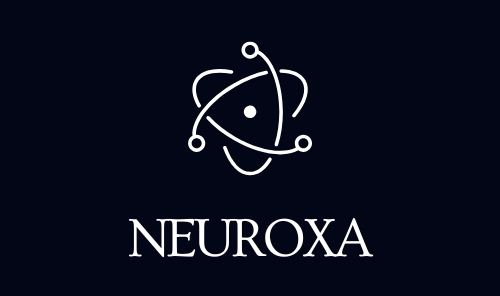The rise of the truly global, AI-augmented workforce demands sophisticated tools to manage compliance, payroll, and cultural alignment across borders. Learn how AI-powered HR platforms and collaboration tools are becoming the operating system for international team management.
1. ⚖️ Automating Cross-Border Compliance and Risk Mitigation
The primary barrier to scaling a global remote workforce is legal and regulatory complexity. Employing staff across multiple jurisdictions means navigating a labyrinth of local labor laws, tax regimes, and contractor classification rules, making compliance the single biggest risk factor for international expansion. AI-powered platforms are transforming this risk into a manageable, automated function.
AI as the Chief Compliance Officer (CCO)
New Human Capital Management (HCM) platforms, like the unified suites offered by ADP and partnerships between Workday and Remote, are embedding AI to handle real-time compliance checks.
- Real-Time Regulatory Monitoring: AI systems constantly monitor legislative changes across 100+ countries. When a local law changes—such as a shift in mandated vacation time in France or a new local tax levy in Brazil—the AI automatically flags the discrepancy and adjusts the corresponding employee contracts, payroll calculations, and compliance documents.
- Contractor vs. Employee Classification: Misclassification is one of the costliest mistakes a global employer can make, leading to severe fines. AI tools analyze job descriptions, working hours, and payment structures against local labor laws to provide an accurate classification determination, significantly reducing legal risk.
- Employer of Record (EOR) Automation: AI streamlines the process for Employer of Record services, automatically generating compliant employment contracts and managing the full hiring lifecycle in countries where the company does not have a local entity. This cuts the setup time from weeks to days, enabling faster talent acquisition across the globe.
According to the 2025 Global Workforce Report, 74% of companies expanding internationally have faced significant compliance challenges, with the average incident costing over $42,000. AI is the direct solution to mitigate this core financial and legal exposure.
2. 💸 Streamlining Global Payroll and Benefits
Beyond legal compliance, the complexity of multi-currency payroll, varied tax deductions, and locally mandated benefits has historically required extensive, localized finance teams. AI is unifying these fragmented processes into single, seamless systems.
The Unified Global Payroll Platform
AI-driven payroll platforms, such as Papaya Global and Deel, are designed to manage the entire financial relationship with the international employee base:
| Payroll/HR Function | AI-Driven Solution | Business Impact |
| Multi-Currency Calculation | Instantly calculates net pay across dozens of countries, factoring in statutory benefits, overtime, and local taxes. | Eliminates manual error and ensures 100% tax accuracy across all jurisdictions. |
| Personalized Benefits | Analyzes local market data and employee needs to recommend compliant and competitive benefit packages in each country (e.g., specific health or pension mandates). | Improves employee satisfaction and retention by offering benefits that are locally relevant and legally required. |
| Time and Attendance | Uses mobile and geofencing data to automate time tracking and attendance management, aligning it with complex regional labor laws (e.g., break times, shift limits). | Ensures adherence to country-specific working hour restrictions and simplifies audit trails. |
The goal is to provide a unified financial experience for a workforce that is anything but unified geographically, allowing the lean HR teams of today (often under 10 people for a global company) to handle international scale efficiently.
3. 🤝 Enhancing Cross-Cultural Collaboration and Communication
A distributed global team must overcome the friction of time zones, language differences, and cultural communication norms. AI is being embedded into collaboration tools to remove these barriers, creating a more cohesive, productive remote environment.
AI as the Cultural and Linguistic Bridge
- Real-Time Multilingual Translation: Collaboration tools like Microsoft Teams and Zoom use AI to provide real-time translation during video calls, chat messages, and documents. This allows team members in Japan and Germany to review the same project update simultaneously in their native languages, drastically improving clarity and reducing clarification time.
- Automated Meeting Intelligence: AI meeting assistants transcribe conversations, flag action items, and create structured meeting summaries that are immediately distributed. This is vital for asynchronous work, ensuring team members who are asleep during the meeting can catch up instantly and accurately.
- Sentiment Analysis and Conflict Detection: Advanced AI tools can analyze the tone and sentiment of internal communications (e.g., Slack, email). For global managers, this provides an early warning system to detect simmering cross-cultural misunderstandings or disengagement patterns before they escalate into conflict or attrition.
4. 📈 Strategic Talent Acquisition and Retention
In the global AI workforce, the competition for top-tier talent is fierce. AI gives global HR teams the power to scout talent globally, predict attrition risk, and personalize the employee experience at scale.
- Global Talent Scouting: AI sourcing tools can scan international databases and platforms to identify candidates with specific, in-demand skills (like AI development or data science) regardless of their geographic location. This moves recruitment from a local search to a truly global one.
- Predictive Attrition Modeling: By analyzing hundreds of data points—from performance review scores and utilization rates to engagement survey results and promotion history—AI can accurately forecast which international employees are at the highest risk of quitting. This enables HR to perform targeted, pre-emptive interventions to improve retention.
- Personalized Learning & Development (L&D): AI platforms like Degreed or Gloat recommend personalized upskilling pathways to remote employees based on their current role, desired career trajectory, and the specific skill gaps identified by performance data. This ensures global talent feels equally invested in, regardless of their location.
The rise of the global AI workforce is thus a dual shift: AI enables companies to hire and manage talent anywhere in the world, while simultaneously creating new roles and career pathways for the employees themselves. This requires HR to shift from an administrative function to a strategic, data-driven engine for global growth.
Source List
- ADP: WorkForce Suite: Global Payroll & HCM Platforms (November 2025)
- Remote: 2025 Global Workforce Report: Lean HR, Global Scale & Intentional AI
- Workday: Workday GO Global Payroll with Remote Integration (November 2025)
- SHRM (Society for Human Resource Management): The Role of AI in HR Continues to Expand (2025 Talent Trends Report)
- Flexhire: AI in HR: The 2025 Guide to Smarter Teams
- McKinsey: The state of AI in 2025: Agents, innovation, and transformation

